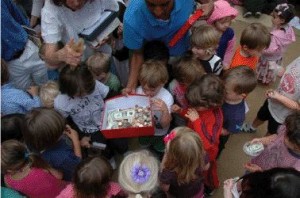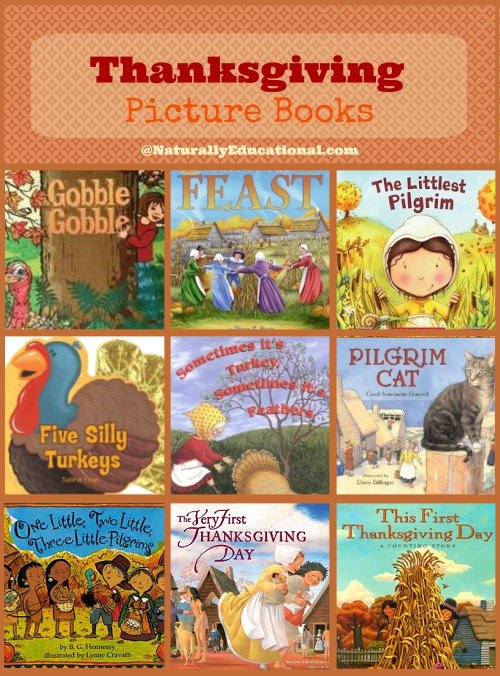As we approach the Holiday Season in the United States, we give thanks for all of our blessings. My thoughts also turn to those who do not have as much as we do–both in the way of material goods but also in terms of opportunity, companionship, and hope.
As parents, we have the important job of teaching children the importance of caring for their fellow human beings–and that even the smallest person can make a big difference.
Here are some expert tips for teaching children about giving and volunteering:

1. Model Giving:
You can talk about charity all day long but what your children will really notice is what you do to make the world a better place. Alexis Boian, Executive Director of the Young Philanthropists Foundation (YPF) explained:
“The number one place children learn to give is in the home. When asked by parents how to ‘teach’ giving, my first response is always ‘What do you do to give back?’ and ‘Do they see you do it? Is there an opportunity for them to do it with you?’ Creating a culture of giving in the home is very important.”
2. Look to Other Kid Role-Models:
Sometimes the role model is another child. Gabe O’Neill founded Kids Are Heroes with his then 9-year-old daughter to recognize the efforts of young volunteers and tap into this inspirational power:
“…there is no doubt our site is a catalyst. We feature more than 150 children from US, Canada, Europe and Africa and we are just getting started. Evan Ruderman is a boy who was influenced by two children from our site. Joey bakes cookies each Christmas to get kids toys and goes to Evan’s school. Evan met MaryMargaret at one of her fund raisers and learned more about Kids Are Heroes. About 8 months later, he was featured. He took Joey’s idea of baking cookies but wanted to support pediatric cancer research.”
3. Work Together:
Don’t underestimate the power of working together as a group. Working together multiplies your effectiveness and also gives kids a social incentive for getting involved with a cause. Plus, the experience of working with a group benefits the young volunteers. Pam Lennox, CEO of Girl Scouts of Citrus Council, located in Central Florida, said that when the girl scouts work together, they show advanced problem-solving, cooperation, and leadership:
“In girl scouts, we teach them to be proactive. When ever you have a group sharing solutions, an idea can be refined and taken from vague to concrete. If I am close to an issue, I may not be able to be creative in that moment but I can talk to my friends and draw on their ideas. They all bring their own creativity and experiences to the issue.” And when the girl scouts donate the money they raise, Lennox pointed out, they must reach a decision together about how to spend that money.
4. Start Small:
If it is easy for adults to get overwhelmed by all the pressing issues facing the world today, it is even more important that we keep it simple for children. The message that small acts of kindness count will resonate with children who are often very aware of their own relative size and power in the world. Even pennies can add up to big action. Penny Harvest has enabled students to raise $347,501.29 in New York City during the 2009-2010 school year and $756,273.19 nationally–all in pennies. Penny Harvest Executive Director, Teddy Gross, explained:
“Giving pennies is a tangible way for children to see the immediate results of their hard work […] The very nature of using pennies demonstrates how incremental change can make an impact. One Student Leader’s reflection from JHS 190 in Queens states it best, ‘The most important thing I learned was how ‘every penny counts.’ I chose this as the most important thing because people don’t realize how every person (no matter what age) can help make a difference in this world.'”
5. Keep Projects Close to Home:
Younger children may have trouble understanding abstract problems halfway across the world. If they can see how an issue affects their community and their neighborhoods, they may be inspired to help out. Silvana Clark, parenting author, advises parents to help children choose specific projects where they can see the effects.
For example, “Have them make “Bedtime Snack Sacks” where they decorate lunch bags with stickers and glitter. Put a granola bar, juice pack and a small Happy-Meal-Type-Toy in the bag. Collect 10-12 bags and have children go with you to a woman’s shelter where the bags go to kids as a bedtime treat.”
Clark says her adult daughter is living proof that the habit of giving is formed early. Sondra Clark, now 21, raised $95,000 for Aids orphans in Africa and wrote her seventh book, 77 Creative Ways Kids Can Serve, by the age of 16.
6. Make the Project “Relatable”:
Even if you chose a cause far away geographically, the idea may still be close to the children’s hearts. The World is Just a Book Away helped the children of Little Dolphins by the Sea preschool raise money to buy books for school libraries in Indonesia. James J. Owens, founder, explained why the children connected so strongly with this project:
“Books are a very important part of the Little Dolphins experience and treasured by the children and their families. The teachers and parents took this opportunity to teach the children about Indonesia and that if the children did chores and saved their money, they would be able to buy books for children who didn’t have any. I believe that showing the children the types of books that would be purchased and pictures of the children and the libraries in Indonesia really helped to bring the project to life for the children at Little Dolphins and their families.”
7. Go Where the Kids Are:
If you want to get school-aged children involved in giving back, give them familiar platforms for launching their charitable work. For many kids today, online is where they meet, exchange ideas, and get motivated to change the world. Lee Fox, founder of KooDooz, a “cause-based” social networking site designed to give kids proven ways to address humanitarian and community challenges by connecting their passion to their cause., said:
“Today’s kids live in a digital playground that has been fortified with educational information and enriched with cause content. In terms of motivating this group to volunteer or do something to help a cause, Club Penguin’s Global Citizenship initiative “Coins For Change” for Haiti is top of mind. This is where members donate their time and the coins they earn playing games in the virtual world to make a difference in the real world.”
8. Organize Off-Site Projects:
If you have trouble finding an organization that allows young volunteers, due to liability reasons, set-up an off-site volunteer project. For example, Ms. Boian, detailed a project to help feed people who are homeless that allows even preschool children to pitch-in:
“The youngest volunteers decorate the bags for food, older elementary students form an assembly line for the packages for delivery, and teenagers organize and lead the project.”
9. Empower Your Children:
Children will be more eager to take action when they believe they can make a difference. And empowering children to help others will increase their own self-esteem, too. Suzy Becker, author of Kids Make it Better: A Write-in, Draw-in Journal, urged parents to respect their children’s unique perspective and talents:
“…As you would in other contexts, let your kids know that their ideas and feelings are important. if they have the impulse to do something, help them do it. Helping kids pursue their talents (interests, skills, and passions) as soon as they’re able to identify them is really important. the uses are as varied as the talents– if a kid likes to draw, they can make cards or flyers. if a kid likes singing, look into an intergenerational sing-along at a nursing home. if a kids dances or is an athlete, maybe a recital or a sporting event becomes an opportunity to collect donations of cash or food or blankets.”
Some online sites to help find service opportunities and ideas for young children.
- Kids Care Clubs gives you materials to help you start your own local volunteer organization for children.
- Find inspiring stories of kids volunteering at Kids are Heroes.
- Penny Harvest empowers children to launch their own fundraisers.
- At KooDooz, kids can connect and discover proven ways to use their passion to address humanitarian and community challenges.
- Both Idealist and Volunteer Match allow you to search for opportunities for children under 12.
What are your tips and resources for teaching children about charitable giving and volunteering?


very nice article, all parents and grandparents should know to use most of these naturally. Thanks.
I enjoyed your article. Considering students are being looked after and get given resources, help and support by their parents, I don’t think they are natural givers. So giving is a skill that is important to teach, and students learn this skill very quickly when your suggestions are put into place, especially modeling. Another method of teaching giving is by playing classroom games with students that involves them working in cooperatively in teams. Many of these games requires the teams to give to each other and help each other out in order to be successful.
I realize my commnet isn’t exactly timely… 🙂 I wandered over here from your omment you left re my link-up to Smart Summer Challenge. So glad I did! Thank you for these wonderful ideas! I, too, volunteered regularly “before children”, and have been thinking about how to instill the value of “giving back” to my child. I am so glad you have some suggestions that could even be done with my almost 4 yr old!
I will continue wandering your site now… 🙂
Comments are always timely, Gwen! I’d love to hear about any of your volunteering experiences with your kids. Thank you for wandering around…make yourself at home!
I know this if off topic but I’m looking into starting my own weblog
and was wondering what all is required to get setup?
I’m assuming having a blog like yours would cost a pretty penny?
I’m not very web smart so I’m not 100% certain. Any recommendations
or advice would be greatly appreciated. Kudos
Thanks for the good writeup. It in truth was a enjoyment account it.
Look complex to more added agreeable from
you! By the way, how could we communicate?